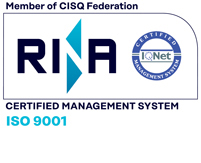Canada
FROM HAZARDS TO PREVENTION: SAFETY IN THE OIL & GAS INDUSTRY
Despite the growth in electric vehicles, gasoline still fuels most cars and trucks, estimated to be nearly 1.5 billion worldwide. Yet, even if a magic wand or genie granting wishes changed every motor vehicle into an EV overnight, the need for petroleum products would still be immense.Oil and gas fuels would continue to be used for cooking, heating, lighting, and power plants, and the need for lubricants would not diminish. Chemicals and petrochemicals would still be vital to produce plastics, fertilizers, pharmaceuticals, and synthetics. Many construction materials—from asphalt roads to bitumen roofs—depend on petroleum derivatives.Oil and gas production will continue; however, the industry is fraught with numerous fall hazards and other risks that can lead to severe injuries or fatalities if not correctly managed. Fortunately, neither a magic wand nor a genie in a bottle is needed. Ample fall protection measures and systems are available to help keep workers safe.Fall Hazards and Protective MeasuresFalls from heights are among the most significant risks in the oil and gas sector. Falls occur while performing routine work and maintenance tasks on rigs, pipelines, buildings, and other elevated structures. According to Canada Occupational Health and Safety Regulations (SOR/86-304)Section 12.07 (1), employers must put in place fall protection if work is to be conducted from a structure or vehicle at a height of 3 meters (approx. 10 feet) or more. (ICE TORONTO)
Fonte notizia: https://constructionlinks.ca/




